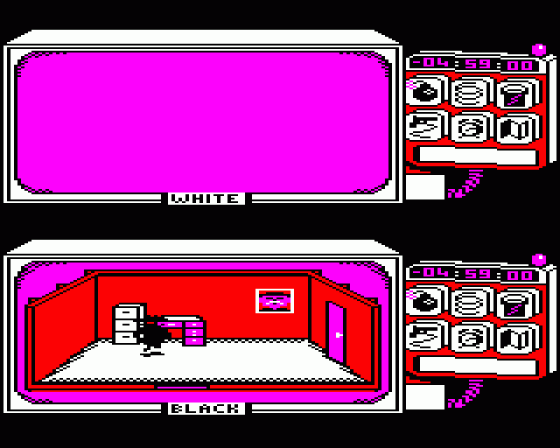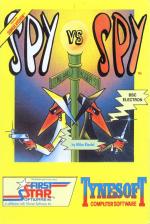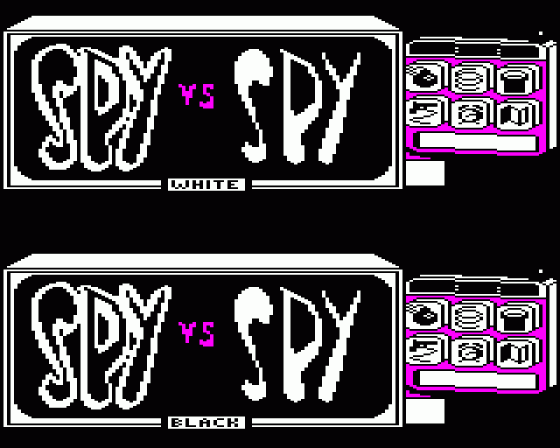
The Micro User
 1st December 1987
1st December 1987
Author: Roundhay Bend
Publisher: Tynesoft
Machine: BBC/Electron
Published in The Micro User 5.10
My name is Bend, Roundhay Bend of the tea service and when The Micro User needed someone to review Tynesoft's new game Spy vs Spy, I was their man.
This is one of those pieces of software you pick up, play, and after 20 minutes of fruitless fumbling, concede it's better to read the instructions first.
This is because it is more complex than it first appears and requires a lot of thought and pre-planning.

Take my advice: Don't rush until you know what you are doing. The game can be played by either one or two players, the BBC Micro controlling your opponent if you select the one player option.
Spy Vs Spy employs a clever technique it calls simulvision
middle, dividing it into two equal sections.
The two spies move independently of each other and their location is shown in each half of the screen - one at the top, one at the bottom. When both are in the same room only one location is shown.

Although similar systems have been used on the BBC Micro (Dunjunz springs tomind). Spy Vs Spy's display is much clearer and this makes the game easier on the eye and nicer to play.
Each room is drawn in 3D as if viewed from the front. This makes it simple to judge the relative positions of objects than other 3D games I have played.
To the right of each playing area is a peculiar looking device called a trapulator. This displays the time remaining, the objects carried, objects found and a booby trap selector.
The aim of the game is simply to recover four particular objects (I won't tell you which, it'll spoil the game) from a rival embassy, pop them in a briefcase and escape back home on an aeroplane.
On the face of it, this may seemsimple, butdon't forget theother spy istrying todo exactly thesame thing, and he's not going to make it any easier for you.
The objects are hidden in a variety of places: Behind paintings, incupboards, andso on.Anice feature istheway they are shifted around when they're being examined by one ofthe spies.
As well as the objects you are searching for, you can run into booby traps left by your rival. If you are fast enough you can see where he places them, courtesy of the clever simulvision and either avoid or disarm them.
Unfortunately, you can only pick up and carry one object or tool at once and if you are holding the wrong one, poof, your little guy floats off to that great embassy in the sky, while the other laughs himself silly.
A very useful booby trap is the time bomb, as this can't be disarmed by either spy. Once selected and dropped you have 15 seconds to leave the room or you'll go up too.
The trouble with booby traps is that either player can trigger them, so don't forget where you put them.
The control keys are a little odd, but remarkably well placed, although the BBC Micro's keyboard is a bit cramped at the best of times for two hands, let alone four.
The game is compatible with joysticks so it may be possible to have one player on keyboard and one on joystick. For graphics and sound the game is excellent and is a credit to the whole programming team.
Overall, I have tosay I have never had so much fun trying to outwit a computer at its own game and the sight of your opponent being electrocuted by touching a booby-trapped doorknob is hilarious.
Due to its complexity, it's not a game for younger children,



